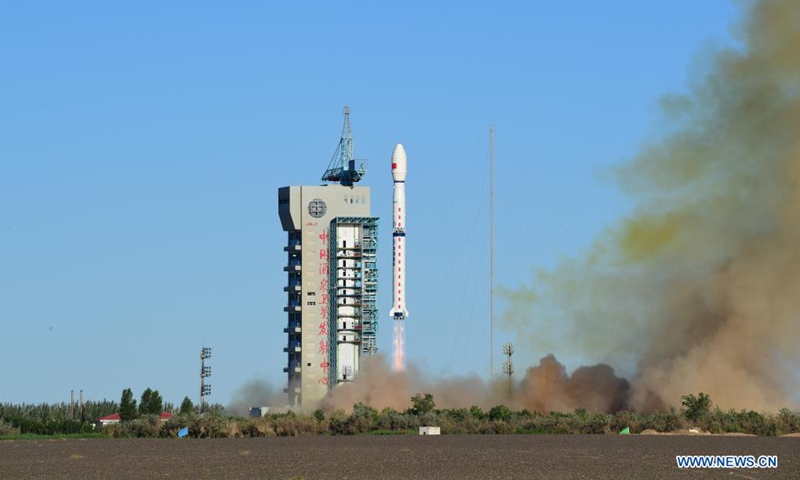SCI-TECH / AIR & SPACE
China sends world’s first meteorological satellite into dawn-dusk orbit, fills gap in global observation data

A Long March-4C rocket carrying the Fengyun-3E (FY-3E) satellite prepares to blast off from the Jiuquan Satellite Launch Center in northwest China, July 5, 2021. China sent a new meteorological satellite into planned orbit from the Jiuquan Satellite Launch Center in northwest China on Monday morning.(Photo: Xinhua)
China has successfully launched the Fengyun-3E satellite on Monday, making it the world's first meteorological satellite that has been sent into the dawn-dusk orbit for civil service.
Experts hailed the launch, saying it will fill the gap in observation data, and realize a full coverage of global meteorological changes.
The Fengyun-3E satellite was sent into preset orbit via a Long March-4C carrier rocket from Jiuquan Satellite Launch Center in Northwest China's Gansu Province on Monday at 7:28 am, according to the China National Space Administration (CNSA.)
The satellite will improve the accuracy of China's weather forecasting and enrich the meteorological satellite observation system, the CNSA said.
Designed to last for eight years and equipped with 11 remote sensing payloads, Fengyun-3E is the world's first meteorological satellite sent into the early morning orbit for civil service.
Together with Fengyun-3C and -3D, the three satellites will form a network and monitor the global meteorological changes from dawn to morning and afternoon periods, realizing a full coverage of global observation data, according to China Space News, the newspaper co-published by two state-owned industry giants, China Academy of Space Technology and the China Aerospace Science and Industry Corporation.
The Fengyun-3E will orbit along the Earth's terminator, or the twilight zone, which is a fuzzy line that separates day and night. Affected by the rising and setting of the sun, these periods of time are often the ones in a day with the most dramatic weather changes.
The satellite will fly over the same place every morning and then fly to the other side of the Earth in the evening, so that the most critical moments at dawn and dusk can be recorded to provide richer and more accurate observation data both for China and the world, Wang Ya'nan, a space analyst and chief editor of Beijing-based Aerospace Knowledge magazine, told the Global Times on Monday.
As with the US and Europe, observation periods of China's previous launches are all around 10 am in the morning and 2 pm in the afternoon with a six-hour assimilation window, which is not enough to cover the entire observation period.
Now with the launch of Fengyun-3E, it will make up for the insufficiencies of observation orbits and fill in the gap in weather data, making significant contributions to weather forecasts of the northern and southern hemispheres, China News reported on Monday.
The successful launch of Fengyun-3E will greatly improve China's capabilities in the fields of weather forecast, climate change, environment monitoring, and others, as it also complements satellite operations in the US and Europe, the report said.
The unique observation data that Fengyun-3E acquires will further boost multilateral cooperation and technology exchanges with other countries, enhance China's influence in the international meteorological community.
The satellite will mainly obtain atmospheric temperature, humidity, and other meteorological parameters for numerical prediction applications, improving China's weather forecast capacity.
It will also monitor the global snow and ice coverage, sea surface temperature, natural disasters, and ecology to better respond to climate change and prevent or mitigate meteorological disasters.


